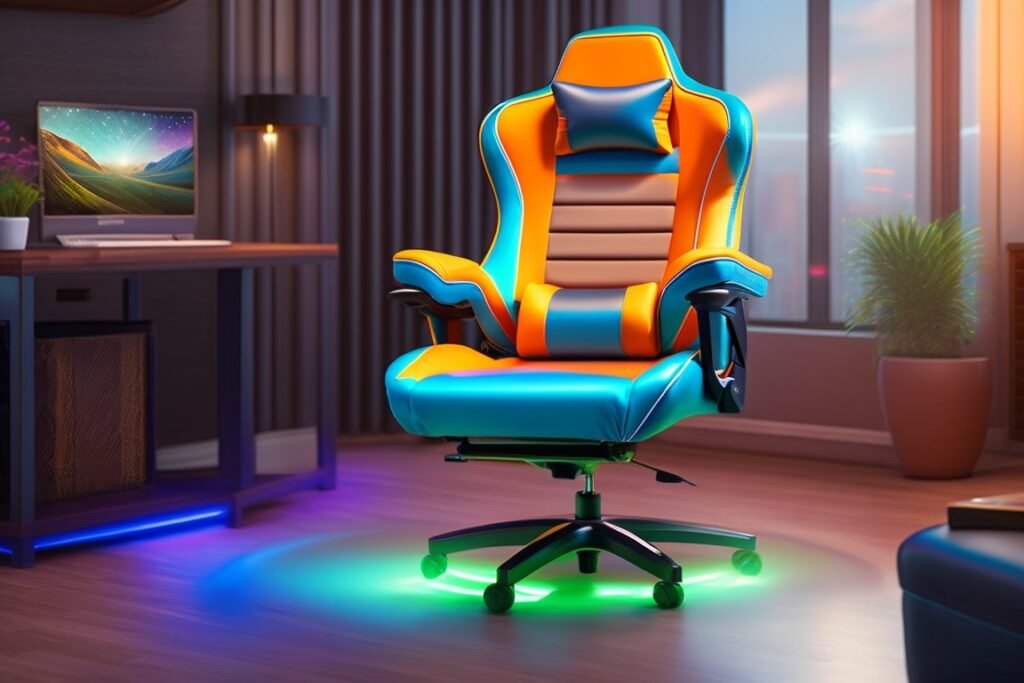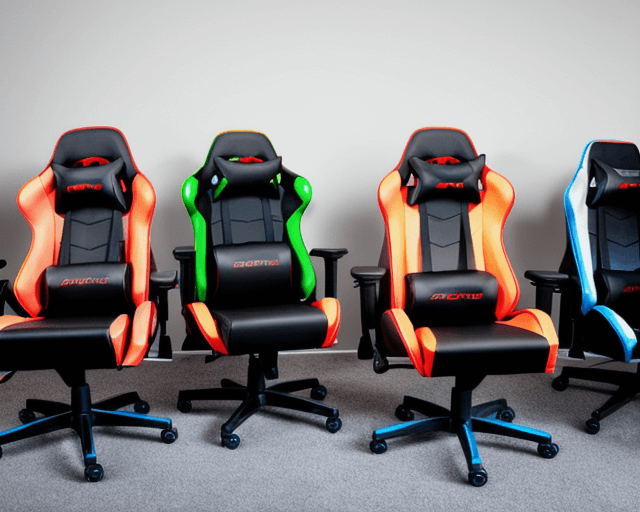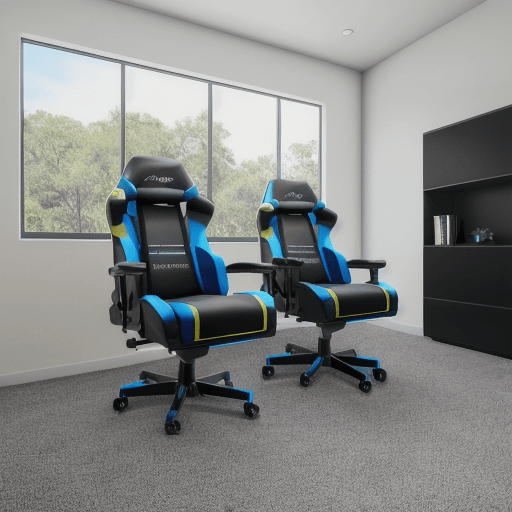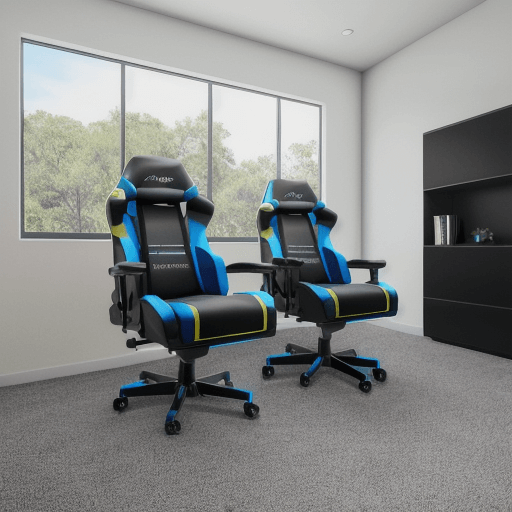The advancement of technology has brought us to a new era in sound systems. Built-in speakers and sound systems have become increasingly popular as people look for convenience, affordability, and superior audio quality.

To better understand the potential that these built-in solutions can offer, it is necessary to evaluate their design capabilities, installation techniques, and performance benefits. By understanding the distinct advantages of built-in speakers and sound systems over traditional home theater setups, consumers can make informed decisions about how best to enhance their listening experience.
This article will explore these topics by providing an overview of what built-in speaker systems are capable of achieving.
The Benefits Of Built-In Speaker Systems
The benefits of built-in speaker systems are numerous. When it comes to sound system design, these types of solutions offer a great deal of flexibility and convenience for the user.
One key advantage is that they can be customized to fit within budget limitations, as well as provide an optimal audio solution for any given room acoustics. Furthermore, with built-in speakers, one does not have to worry about their equipment being damaged or stolen since they will typically be installed in fixed locations.
This makes them ideal for permanent installations such as music venues or commercial outlets because there is no need to constantly move the equipment around from one location to another. Additionally, when compared to traditional speaker systems, the installation process is much simpler and quicker due to their lack of moving parts.
Finally, users also benefit from improved sound quality when using built-in speakers thanks to their increased efficiency over other types of loudspeakers. By having direct access to the power source rather than relying on external amplification devices, these speakers can produce more accurate sounds without distortion or interference from outside sources.
As such, they provide superior sound reproduction even at low volume levels which make them an attractive choice for those who want high fidelity audio without sacrificing clarity or performance capabilities. With this in mind, it becomes clear why many people prefer built-in speakers over other alternatives available on today’s market. Moving forward then we turn our attention towards understanding what design considerations should be taken into account when installing these kinds of solutions.
Design Considerations For Built-In Speakers
Designing a sound system with built-in speakers is an important factor to consider when creating the perfect listening environment. Acoustic foam can be used to reduce echoes in larger rooms and help create better sound quality. The size of the room should also be taken into account, as proper speaker placement will have varying results based on how reverberant or quiet it is.
When designing a system with built-in speakers, there are several key elements that must be considered:
- Room size – A bigger space may require more acoustic treatment than a small one.
- Speaker placement – Positioning your speakers correctly for optimal audio performance.
- Acoustic foam – Utilizing this material to absorb excess noise and improve sound clarity.
In order to get the best out of any sound system, these three design considerations must be carefully planned and executed. With all of them addressed properly during installation, you can enjoy amazing sound quality from your built-in speakers and take pleasure in a great listening experience every time.
Moving onto the next stage of setup, we’ll look at the process for installing these systems correctly.
Installation Process For Built-In Speakers
Installing built-in speakers can be an exciting project for audio/sound system enthusiasts. DIY installation is a key step to ensure optimal performance of the sound system, as it ensures proper connection and compatibility with other components in the setup. This process involves consideration of several factors such as positioning of speakers, cable routing, and power draw.
The complexity of the installation will depend on the size and type of system being installed. If installing multiple wired speakers or wireless modules, then one must consider how many cables are required to connect them all together. It is important to make sure that each speaker has its own dedicated channel in order to maximize its potential output capabilities.
The amplifier should also be set up so that the total power draw does not exceed its rated limit. Additionally, if using wireless technology, one must ensure that they have compatible hardware in both their transmitter and receiver devices.
Testing the overall sound quality after installation is a critical part of this process as well; ensuring that every component’s settings are correctly adjusted and balanced with each other will lead to a satisfying listening experience.
By following these steps carefully, any enthusiast can successfully install their built-in sound system and reap all its available benefits moving forward. Moving ahead we’ll explore further into the performance advantages of having built-in speakers compared to traditional external systems.
Performance Benefits Of Built-In Speakers
When it comes to installation of built-in speakers, the process can be daunting. However, with proper guidance and instruction, an experienced sound system expert should have no trouble completing the task.
It is worth mentioning that while there are some challenges involved in setting up these types of systems, such as soundproofing techniques and ensuring audio quality remains consistent, the benefits far outweigh any potential drawbacks.
Performance-wise, built-in speaker systems provide tremendous value for their size. The range of sound they produce is often comparable to much larger external speakers which makes them a great choice for those who want full coverage without sacrificing space.
Additionally, they do not require additional wires or cables since they are connected directly into the walls or ceiling making them incredibly easy to maintain over time. This also allows users to install multiple sets of speakers throughout their home without having to worry about complex wiring configurations or tangled cords.
Finally, another advantage of using built-in speakers is that they offer superior performance when compared to wireless options due to their direct connection into walls or ceilings. As a result, less signal interference is present which results in improved sound clarity and greater overall sound pressure levels (SPL).
In addition, by eliminating any extra wires or cables from view this also adds aesthetic appeal to your home’s audio setup since everything appears neat and organized. With all these factors taken into account it becomes clear why many people prefer built-in speaker systems over other alternatives available on the market today.
With its unique advantages discussed above, one may then consider if wired versus wireless built-in speaker systems would be best suited for his/her needs.

Wireless Vs. Wired Built-In Speaker Systems
Built-in speaker systems come in two main varieties, wireless and wired. Both have advantages and disadvantages that must be considered when making a decision on which type of system is right for an individual’s needs.
Wireless built-in speakers use radio frequencies to transmit sound signals from the audio source to each individual speaker, allowing them to be placed away from the main device. This can provide more flexibility in terms of where the speakers are located, but there may be some interference with other electronic equipment or even nearby objects such as walls. Additionally, the audio quality transmitted over a wireless signal will not be quite as good as it would through a wired connection.
Furthermore, wireless systems tend to cost more than their wired counterparts due to additional hardware components needed for installation.
Wired built-in speakers utilize cables that connect directly between the audio source and each individual speaker. This ensures consistent sound quality since no information is lost along transmission lines, however this also limits the placement options for each speaker since they need to remain within reach of a cable line.
The cost associated with wiring up all of these connections tends to make wired systems much cheaper than their wireless equivalents overall once everything has been installed correctly.
Different types of built-in speakers offer various pros and cons depending on one’s budget and specific needs; therefore taking into account factors such as audio quality, system cost, installation difficulty and desired location should all be considered before making any decisions about purchasing either type of system.
Different Types Of Built-In Speakers
The debate between wireless and wired built-in speaker systems is an interesting one. Ultimately, it comes down to personal preference of the user: do they want an easier setup process with greater convenience from a wireless system or more robust sound quality from a wired setup?
When selecting the right type of built-in speakers, there are several factors to consider. These include:
- Size – The size of your room will determine how much bass you need for room filling audio. Larger spaces require larger drivers that can handle higher power levels.
- Design – Some designs feature open back panels while others may have closed backs which help deliver a fuller low end frequency response.
- Amplification Technology – Different types of amplifiers provide different features such as digital signal processing (DSP) and equalization options.
- Price – High-end models typically offer better sound quality but come at a cost premium compared to lower priced models.
- Installation Ease – Depending on where the speakers are located in the home, installation could range from fairly simple to quite complex.
These considerations should all be taken into account when assessing the overall quality of any given set up before making a purchase decision. Taking these points into consideration can ensure that users get maximum value out of their investment by having the best possible listening experience with built-in speakers in their home sound system.
With this knowledge, users can confidently move forward toward assessing the quality of available built-in speakers for their needs.
Assessing The Quality Of Built-In Speakers
Sound clarity is an important factor when assessing the quality of built-in speakers and sound systems.
To evaluate sound clarity, one should assess the accuracy of different frequencies, as well as the level of distortion produced by the speaker.
Bass response is another important factor when assessing the quality of built-in speakers and sound systems.
It is important to evaluate the speaker’s ability to accurately reproduce low-frequency sounds according to the desired balance between bass and treble.
Sound Clarity
When assessing the quality of built-in speakers, sound clarity is an important factor to consider.
The selection of the amplifier plays a key role in producing a clear audio signal and should be closely examined when shopping for built-in speakers.
Proper acoustic treatments such as wall panels and diffusers can also have a significant effect on sound clarity by reducing unwanted reverberations that muddle the audio signal.
Installing these types of treatments helps optimize performance from your speaker system and ensures that you get the most out of your investment.
Ultimately, choosing the right hardware combined with thoughtful placement and acoustic treatments will maximize the quality and clarity of your built-in speaker system.
Bass Response
In addition to sound clarity, bass response is another important factor when assessing the quality of built-in speakers.
The amount and depth of low frequency sounds that a speaker can produce depends on several factors, including room positioning and speaker placement.
Properly placing your speakers in an acoustically treated environment will ensure maximum bass performance from your system while avoiding any unwanted rattles or vibrations from nearby objects.
It is also important to consider the size of the space when selecting speakers as larger rooms often require more powerful models with greater bass output capabilities for optimal results.
Ultimately, choosing the right hardware combined with thoughtful placement and acoustic treatments will ensure you get the most out of your investment by maximizing bass response.
Troubleshooting And Maintenance Tips For Built-In Speaker Systems
Maintaining and troubleshooting built-in speakers and sound systems is essential for ensuring optimal performance. A few key areas to consider when maintaining a system include amplifier selection, soundproofing techniques, and speaker placement.
Ampifier selection is an important step in the process of selecting equipment for a sound system. Choosing the right amp will ensure that your sound system is able to deliver capable power output with minimal distortion or noise interference. It should also provide enough channels for powering multiple components. When shopping for an amp, look for models that are designed specifically for use with built-in speakers; these amps tend to be better equipped to handle higher wattages without distorting the signal.
Soundproofing techniques can help reduce external noises from interfering with playback quality. This includes using acoustic panels or other materials on walls and ceilings so as to absorb outside sounds before they reach the interior space where audio playback takes place. Additionally, making sure windows are securely sealed against outside air currents can prevent unwanted ambient noise from entering the listening area. Quality insulation can also be used between rooms in order to limit any potential cross-sound leakage occurring between them.
When placing speakers within a room, it’s important to take into account factors such as size of the room and its acoustical properties, along with how many people will typically be present during playback sessions. For best results, try experimenting with different placements until you find one that produces a balanced stereo image throughout the entire space while still providing ample coverage at all seating positions regardless of distance from the source material itself.
Frequently Asked Questions
What Is The Average Cost Of A Built-In Speaker System?
When considering the cost of a speaker system, it is important to take into account factors such as connectivity options and room acoustics.
Generally speaking, built-in speakers and sound systems can range in price from around $200 for basic models up to several thousand dollars for high end solutions.
Exact prices will vary depending on the type of components used, as well as their quality and complexity.
For example, a more advanced setup with multiple speakers or wireless connectivity could potentially cost significantly more than a simple stereo pair of speakers connected via traditional analog cables.
How Can I Enhance The Sound Quality Of A Built-In Speaker System?
Enhancing the sound quality of a speaker system is like fine-tuning an orchestra.
Room acoustics play a critical role in achieving optimal sound; materials such as carpet, furniture, and curtains can absorb or dampen certain frequencies.
Similarly, amplifier power should be taken into consideration to ensure that the speakers are receiving enough power to produce clear and crisp audio.

Taking these factors into account will help create an immersive listening experience for any user.
What Is The Difference Between A Wired And Wireless Built-In Speaker System?
The choice between a wired and wireless built-in speaker system can have an impact on sound quality.
Wired systems are typically less expensive, but may require additional work to properly install the wiring in the walls or ceilings of the room.
Wireless systems offer more flexibility when it comes to placement within the space, however they may be more expensive than their wired counterparts.
Additionally, soundproofing materials must also be taken into account when determining which type of system works best for a particular room layout.
What Is The Best Type Of Built-In Speaker System For My Home?
Home sound systems can be a tricky business, as producing great audio quality requires both the right equipment and thoughtful set-up.
When choosing the best type of built-in speaker system for your home, it is important to consider room acoustics as well as proper speaker placement in order to get the most out of your investment.
To ensure optimal performance, an expert should evaluate your space before selecting any product.
With careful consideration of factors like frequency response, dispersion patterns and distortion levels, you will have no difficulty finding a suitable solution that fits both your needs and budget.
Are There Any Special Safety Considerations For Installing A Built-In Speaker System?
When installing a built-in speaker system, safety considerations must be taken into account.
It is important to ensure that the power supply is appropriate for the size and type of sound system being installed.
Furthermore, room acoustics should be assessed in order to prevent feedback or other sound distortion issues.
To avoid any potential damage to the speakers or sound system, professional installation may be recommended when possible.
Conclusion
The cost of a built-in speaker system is relative to the quality and features desired. Investing in a higher quality system may be worth it for those seeking superior sound performance.
The difference between wired and wireless systems can depend on available space, as well as budget considerations.
In terms of type, consider room size when selecting components, in order to maximize efficiency from each component.
When installing a built-in speaker system, safety should not be overlooked. Electrical wiring must follow local codes and regulations, with grounding an absolute necessity.
Additionally, speakers should never exceed their maximum wattage rating; otherwise, damage or fire could occur due to overheating. By keeping these factors in mind when designing your own sound system, you will ensure both optimal performance and safe operation.

Sha Neumeister, the visionary behind SomosVisibl.com, is a connoisseur of gaming chairs that prioritize both style and comfort. With an unparalleled understanding of ergonomics and a passion for enhancing the gaming experience, Sha curates a collection of gaming chairs that offer impeccable support and aesthetic appeal. Elevate your gaming setup with Sha’s handpicked selection of gaming chairs, designed to keep you comfortable and immersed in your virtual adventures.








